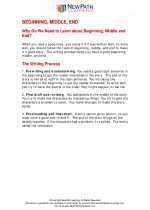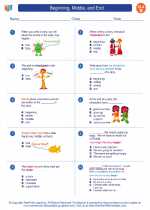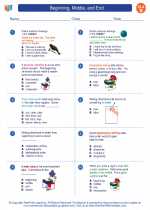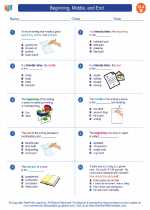Beginning, Middle, and End
In a story, the beginning, middle, and end are important parts that help organize the plot and make the story interesting. Understanding these parts helps readers comprehend the sequence of events and the development of the characters and the plot.
Beginning
The beginning of a story introduces the setting, the characters, and the main problem or conflict. It sets the stage for the entire story and grabs the reader's attention.
Middle
The middle of the story is where the main events and actions take place. It includes the rising action, where the conflict intensifies, and the characters face challenges and obstacles. The middle builds suspense and keeps the reader engaged.
End
The end of the story resolves the conflict and ties up loose ends. It provides closure and often includes a resolution or a lesson learned. The end gives the reader a sense of completion and satisfaction.
Study Guide
- What is the purpose of the beginning of a story?
- What is the role of the middle in a story?
- What does the end of a story provide?
- Why are the beginning, middle, and end important in a story?
The beginning introduces the setting, characters, and the main problem or conflict.
The middle includes the rising action, where the conflict intensifies, and the characters face challenges and obstacles.
The end resolves the conflict, ties up loose ends, and often includes a resolution or a lesson learned.
Understanding these parts helps readers comprehend the sequence of events and the development of the characters and the plot.
Understanding the beginning, middle, and end of a story is essential for comprehending and analyzing the structure of a narrative. It allows readers to engage with the plot, characters, and themes effectively.
[Beginning, Middle, And End] Related Worksheets and Study Guides:
.◂English Language Arts Worksheets and Study Guides Second Grade. Beginning, Middle, and End

 Worksheet/Answer key
Worksheet/Answer key
 Worksheet/Answer key
Worksheet/Answer key
 Worksheet/Answer key
Worksheet/Answer key
